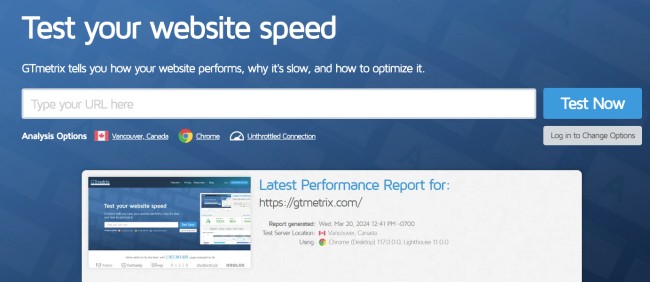
It’s becoming more challenging to draw and keep the attention of modern users. Information overload, vast choice of websites, and web applications have made customers more demanding and intolerable to any performance inconveniences.
Front-end optimization solves performance issues and plays a pivotal role in retaining users, improving conversion, and forming a convenient customer experience.
In this article, we will provide you with the front-end performance checklist that will help you optimize your web development project and enhance your position on the market.
Getting Ready: Planning And Metrics
The process of optimizing front-end performance begins with planning. It can include three stages: forming a performance culture, choosing suitable metrics and tools, and setting the goals.
Forming a Performance Culture
Front-end performance depends much on the developer mindset. Thus, to establish an efficient web development process it’s necessary to build a performance culture among the front-end developers.
It will help your company not only benefit from current optimization solutions but also foster future project efficiency.
Choosing Metrics and Tools
Trying to test your front-end performance, keep in mind that not all the metrics are of the same importance. One of the most important aspects to check is how much time your web application or website takes to load. Here are some of the numerous metrics that can let you gauge it.
- First Contentful Paint measures the loading time from the typing in the URL until the first bit of visual content rendered by the browser.
- Speed index handles measuring the loading time required for making all the pages’ content visible.
- Time to interact shows when the page is ready to respond to user actions.
Apart from separate metrics, different multifunctional tools help audit front-end performance and identify some key aspects to focus on.
1. Google Lighthouse
Google Lighthouse is an automated open-source tool that lets developers analyze web site or web application performance and offers some improvement tips.
It scores the front-end performance based on a 1 to 100 scale (the higher, the better), generating easy-to-read reports even for non-technical specialists. It can operate in Chrome developer tools, or as a Node module.
2. PageSpeed Insights

PageSpeed Insights is another free performance tool powered by Google. It receives the PageSpeed score from the Google Lighthouse.
Yet, while the Lighthouse runs various audits covering different aspects of the website (including SEO, accessibility, etc.) PageSpeed Insight gauges only the performance metrics.
3. WebPageTest
WebPageTest is an open-source free tool for measuring page loading speed. It was first meant to be an internal project of AOL, but in 2008 it became an open-source software maintained by Google.
WebPageTest uses a real browser to collect metrics and analyze the efficiency of the web page helping developers build robust and responsive websites and applications. There is a choice of Advanced Testing, Simple Testing, Visual Comparison, and Traceroute.
4. GTMetrix

GTMetrix is one of the most efficient free tools helping developers to access the performance and speed of web apps or websites.
It provides detailed reports offering handy recommendations to improve performance. Apart from the current analysis, it allows front-end developers to schedule further regular reports.
Setting the Goals
A clearly defined target helps to make rational decisions during the entire process of front-end performance improvement. It serves as a visualization instrument making the optimization process more time-efficient and cost-saving.
When it comes to setting the goals, analyze the metrics and user complaints, examine the front-end performance of your competitors, and form your target based on the results of your research.
It’s worth mentioning that, according to the psychological theories, for the users to see the difference in loading speed, your web page should be at least 20% faster than the competitors’.
Front-End Performance Optimization Guidelines
Having checked the metrics and understanding the goals, it’s high time you consider different techniques that will help you speed up web app performance fostering enhanced user engagement and customer experience.
Here are the most important of them.
1. Image Optimization:
Ensure that all the images are essential since they take more time to load. Moreover, reference images in the HTML page as the ones referenced in CSS aren’t downloaded until the CSS is downloaded itself.
Another image optimization technique is Lazy Loading. The browser usually loads all the images, regardless of their position on the web page, while Lazy Loading loads first the images in the user’s viewpoint, proceeding with the rest as the user scrolls down the page.
2. Reduce HTTP Requests
The more HTTP requests you have, the slower your web page is. One of the reasons for this pitfall is unnecessary CSS stylesheets. Thus, to improve your front-end performance, identify and get rid of excessive CSS documents or combine important small CSS stylesheets into a single file.
3. Cut The Number Of Fonts
Browsers spend more time loading different fonts since they need to retrieve more data. Thus, it’s reasonable to reduce the number of fonts used on your web page if your design concept allows doing so.
4. Reduce DNS Lookups
Another aspect that influences front-end performance efficiency is the number of Domain Number System (DNS) lookups.
One lookup doesn’t take much time: 20 – 120 ms for wired networks, 120 – 140 ms for mobile networks. However, if the website assets are connected with many hosts in various domains, the loading time will plummet.
5. File Minification
It allows developers to reduce download time by making CSS, HTML, and JavaScript files less complex. What is more, it’s possible to use gzip to compress code files by up to 70%.
6. Cache Optimization
To achieve high website performance standards, it’s also important to implement an effective strategy for the cache headers (expires, age-control, etc.) so CSS files, images, and JavaScript assets will not be downloaded again unless necessary.
Conclusion
Web apps and websites with poor interfaces and slow loading speed face the risk of losing customers. Therefore, robust front-end performance is one of the benchmarks defining a company’s success.
Although there is a vast number of web performance checklists and free tools for front-end optimization, the outcome depends much on the development culture and qualification of your software engineers.
Thus, when considering creating a website or optimizing the existing one, it’s better to consult an experienced front-end development company that will help you achieve seamless front-end performance and provide your company with an increased customer experience.
